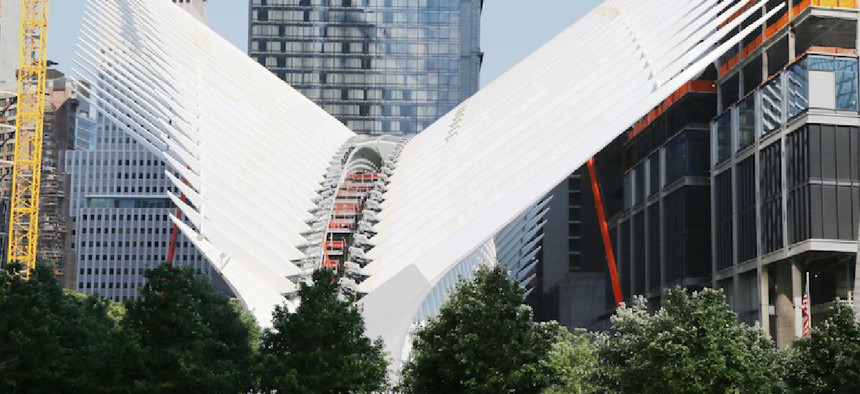Opinion
A welcome return to grand aspirations in public design

Leonard Zhukovsky / Shutterstock.com
In October 1963, a wrecking ball hit the old Pennsylvania Station, and a deep and grievous wound was opened in New York City’s relationship with public space. We lost not only an essential piece of our architectural heritage, but also the idea that grandeur – more specifically, grandeur intended to serve the broader public – was somehow unjustified and inappropriate.
The opening of Santiago Calatrava’s World Trade Center Transit Hub in lower Manhattan begins to upend that outdated notion. However an imperfect messenger, the Hub will ultimately prove that the public sector can and should aspire to design greatness. Daring design has tangible economic rewards and, at the same time, elevates the everyday lives of our citizens.
The project is a triumph, even in the face of its undeniable failures. Its history is one of muddled management and a lack of rigorous cost containment. Clearly, the Hub’s gargantuan price tag – reportedly close to $4 billion – led to the delay or denial of other worthy projects and transit renovations, and not everyone likes Calatrava’s design. But as we approach the Hub’s opening in March, we should examine what it is and what it does.
The Hub heralds a golden era of transportation in lower Manhattan, and it will play a key role in the area’s continuing renaissance and contribution to our tax base. The Hub is built on a scale not seen in New York since the halcyon days of public transit investment in the early 20th century. It rationalizes connectivity in Lower Manhattan and is already ushering a retail, dining and development boom in the neighborhoods around it.
The new Fulton Center is one block away. The two stations – which will be connected by a new underground walkway – will, for the first time, conveniently join the interstate PATH train and nine different New York City subway lines. The Hub will be surrounded by 350,000 square feet of retail and restaurants that will generate close to $1 billion in sales activity each year and end up employing thousands of New Yorkers. The World Trade Center station is also linked with Battery Park City’s Brookfield Place by an underground concourse, which opened a year ago. This will, for the first time, make for a seamless East-West connection across most of lower Manhattan. When the hub and shopping center are going full steam, up to 250,000 people will use it on a daily basis.
The Hub is a striking and defiant declaration of modernism and optimism at the site of one of our nation’s greatest tragedies. The soaring 150-foot interior height and 30,000 square feet of column-free space in its Oculus creates one of New York’s most inspiring interiors. It is not sentimental to say that the transit hub is a beacon of hope; it is not an exaggeration to say the sight of it is uplifting.
This is not a temple to oligarchs, not a fortress for the few, but a train station, a market and a crossroads for all the citizens of the city and for visitors from around the world.
Writing about another glorious New York space for the New York Times in 2012, Michael Kimmelman noted: “To pass through Grand Central Terminal, one of New York’s exalted public spaces, is an ennobling experience, a gift.” So too will be the experience of walking through the World Trade Center transit hub, reanimating architectural ambition and beauty as a civic good. Time will bear out whether the investment in ambitious public design is invaluable as economic development. Soulless utilitarianism in public space is bad for our spirits and ultimately our pocketbooks. Calatrava’s creation is an antidote to that.
Jessica Lappin is the president of the Alliance for Downtown New York.